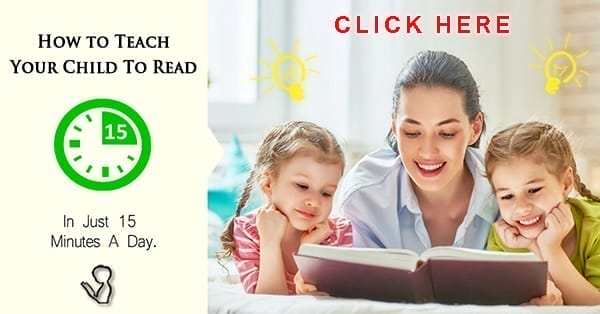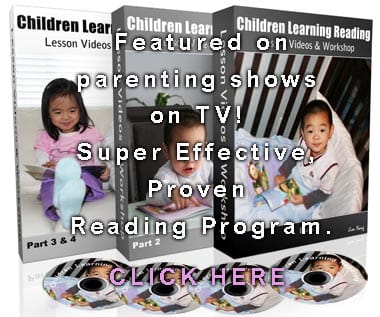The Ultimate Guide: How to Teach Reading to Kids of All Ages
How to Teach Reading to Kids of All Ages: This guide is designed to provide parents, teachers, and other educators the tools and strategies they need to teach reading to kids of all ages. It covers everything from the basics of phonemic awareness to more advanced literacy topics, such as comprehension. It is filled with useful tips, activities, and resources that will help your students develop strong literacy skills. Whether you’re a parent looking for advice on how to teach your own children to read or an educator looking to expand your knowledge on the subject, this guide has something for everyone.

The Benefits of Teaching Reading to Kids Earlier
![]()
Teaching reading to kids at an early age comes with a multitude of benefits that go beyond simply acquiring a new skill. The advantages of introducing reading to children at a young age are vast and can have a long-lasting impact on their cognitive, emotional, and social development.
One of the key benefits of teaching reading to kids earlier is the enhancement of their language skills. When children are exposed to books and reading materials from an early age, they develop a more extensive vocabulary, as they are exposed to a wider range of words and language structures. This exposure helps them develop better communication skills, leading to improved verbal fluency and articulation.
Additionally, early reading instruction fosters a love for books and learning in children. When kids are introduced to reading at a young age, they often develop a positive attitude towards books and become eager to explore new stories and ideas. This passion for reading can lead to a lifelong love for learning, as they discover the joy and excitement that books can bring.
Furthermore, early reading instruction promotes cognitive development in children. Reading requires various cognitive processes, such as memory, attention, and critical thinking. When kids engage in reading activities from an early age, they develop these cognitive abilities, which are crucial for their overall intellectual growth. Reading also helps children develop logical thinking skills, problem-solving abilities, and creativity, all of which are essential for their academic success.
Beyond cognitive development, teaching reading early on also has a significant impact on a child’s emotional and social development. Reading books often contain stories that portray different emotions, experiences, and perspectives. As children read these stories, they learn to empathize with characters and understand different emotions, fostering emotional intelligence. Additionally, reading provides an opportunity for children to explore social situations and understand different cultures, helping them develop empathy and tolerance towards others.
Moreover, early reading instruction can strengthen the parent-child bond. When parents read to their children, it creates a special bonding experience and strengthens the emotional connection between them. This shared activity promotes a sense of security and trust, laying a solid foundation for positive parent-child relationships.
In conclusion, teaching reading to kids at an early age offers numerous benefits that extend far beyond the acquisition of literacy skills. From enhancing language abilities and fostering a love for learning to promoting cognitive, emotional, and social development, early reading instruction sets children on a path towards success and personal growth. By investing in reading education from an early age, we can empower children to become lifelong learners and well-rounded individuals.
Strategies for Engaging Kids of All Ages in Reading
![]()
Reading is an essential and important activity for children of all ages and can help foster a lifelong love of learning. However, engaging kids in reading activities can often be a challenge. Here are a few strategies to help make reading fun and engaging for kids of all ages:
- 1. Read Together: One of the best strategies for engaging kids in reading is to read with them. For young children, reading aloud to them and having them follow along can help them become familiar with stories and start to recognize words. Older children may benefit from reading together and discussing the text, allowing them to understand and internalize the content more deeply.
- 2. Use Variety: To keep kids engaged in reading, it’s important to use a variety of materials. This can include books, magazines, newspapers, and even online sources. Variety helps to keep kids interested and can help them explore different topics and genres.
- 3. Incorporate Movement: Incorporating movement into reading can help to keep kids engaged and can help them focus on the text. For example, having kids stand or move while they read can help them stay alert and can help them better understand the material.
- 4. Make It Fun: Reading can be made fun by incorporating activities such as games, crafts, or puzzles. This can help to make reading more enjoyable and can help kids stay engaged in the material.
- 5. Set Goals: Setting goals for reading can help to motivate kids and can help them stay engaged. This can include setting a number of books to read in a certain period of time, or having them read a certain amount of pages each day.
By using these strategies, kids of all ages can stay engaged in reading and can develop a lifelong love of learning.
Tips for Crafting a Reading Lesson Plan
![]()
Reading is a fundamental skill that all students must learn in order to succeed in school. As an educator, it’s your job to create an effective reading lesson plan that engages your students and encourages them to become avid readers. To help you craft an effective reading lesson plan, here’s an ultimate guide.
Step 1: Set Goals
Before you begin crafting your lesson plan, you need to decide what you want your students to get out of the lesson. Are you focusing on reading comprehension? Are you trying to teach them how to identify story elements like plot and character development? Setting clear goals will help you create a more effective and organized lesson plan.
Step 2: Choose Texts
When it comes to reading lessons, the material you choose is essential. Make sure you choose material that your students are interested in and able to comprehend. It’s also important to choose texts that are age-appropriate and will challenge your students to think critically.
Step 3: Develop Activities
Once you’ve chosen your texts, it’s time to create activities that will help your students engage with the material. This can include activities such as writing summaries, engaging in class discussions, or creating visual representations of the text.
Step 4: Assess Student Learning
Once your students have gone through the lesson, it’s important to assess their learning. This can be done through informal assessments such as anecdotal notes or more formal assessments such as quizzes or tests. This will help you see how much your students have learned and determine which areas need more improvement.
Step 5: Reflect and Adjust
The last step in crafting a reading lesson plan is to reflect on the lesson and adjust it as needed. Take the time to think about what worked and what didn’t and make changes accordingly. This will help you make sure your students are getting the most out of the lesson.
By following these steps, you can create a more effective reading lesson plan that engages your students and encourages them to become avid readers. With a little bit of planning and creativity, you can create a lesson plan that will help your students become successful readers.
Helping Young Children Learn to Read
![]()
First and foremost, it is important to instill a love of reading in your children. Encourage them to explore books by reading to them often, taking them to the library, and creating a reading corner in your home. As children get older, they will enjoy picking out their own books, so be sure to let them do this whenever possible.
Another key factor in helping young children learn to read is developing phonemic awareness. This is the ability to recognize and manipulate the individual sounds in words. To help children with this, you can play sound and word games such as rhyming, clapping out syllables, or stretching out words.
Reading comprehension is also an important part of learning to read. To help children understand what they are reading, it is important to ask them questions about the text and discuss the story with them. Additionally, it is good to practice sight words with your children. These are words that are most commonly found in text and are difficult to sound out.
Finally, it is important to provide children with plenty of opportunities to practice their reading skills. Reading aloud to them is a great way to help them become more comfortable with the process. Additionally, you can have them read aloud to you, or take turns reading and make it a fun activity.
How to Address Common Reading Challenges
![]()
When it comes to comprehension, the most important thing to remember is that each student learns differently. As an educator, it’s important to take time to get to know your students and their individual needs. This can help you create a personalized reading plan for each student. Encourage students to ask questions and take notes, and use strategies such as summarizing and visualizing to help them understand the material.
When it comes to decoding, it’s important to start by teaching basic phonics and sight words. You can also use fun activities such as word families and word scrambles to help students learn and practice their decoding skills. Additionally, you can use multi-sensory activities to help students recognize and remember words.
Improving fluency is another important component of reading. Encourage students to read aloud and practice reading with expression. And use technology to help students record their readings and track their progress.
Finally, it’s important to keep students engaged in the material. Give them choice in their reading materials and create an environment that nurtures a love of reading. Offer incentives and rewards, and find interesting ways to bring the material to life.
Tailoring a Reading Program for Different Age Groups
![]()
First, consider the age group you are working with and their developmental differences. Each age group has its own unique needs and abilities when it comes to reading. For example, preschoolers tend to be interested in stories with simple language and plenty of pictures, while older grades may be more interested in longer stories with more complex language. Understanding the age group’s needs and abilities is key to tailoring a successful program.
Second, consider the types of texts that will be used. Different age groups will have different interests and abilities when it comes to reading. Younger readers may be more interested in picture books while older readers may appreciate longer texts. It is important to choose texts that will be engaging and appropriate for the age group.
Third, consider the types of activities that will be included in the program. Different age groups will enjoy different types of activities. For example, younger readers may enjoy activities that involve movement, while older readers may enjoy activities that involve more critical thinking. It is important to create activities that are both engaging and age-appropriate.
Finally, consider the kinds of support that are available for the program. Different age groups may require different levels of support. For example, younger readers may need more guidance and support, while older readers may be able to work more independently. It is important to ensure that there is sufficient support available for each age group.
Frequently Asked Questions
![]()
1. What is the best age to start teaching children how to read?
– The ideal age to start teaching children how to read is around 4 to 5 years old, as this is when their brains are most receptive to language and literacy development. However, every child is different, so it is important to gauge their readiness and interest.
2. How can I make reading enjoyable for my child?
– To make reading enjoyable for your child, start by choosing books that align with their interests and preferences. Use animated voices and engaging facial expressions while reading aloud to bring the story to life. Encourage your child to participate by asking questions or letting them predict what might happen next. Make it a cozy and comfortable experience by creating a reading nook or incorporating storytelling into their bedtime routine.
3. What are some effective strategies to teach reading?
– Some effective strategies to teach reading include phonics instruction, sight word recognition, and guided reading. Phonics instruction focuses on teaching letter-sound relationships, enabling children to decode words. Sight word recognition involves memorizing commonly used words to improve reading fluency. Guided reading involves providing individualized support to children as they read, helping them develop comprehension skills.
4. How can I motivate my child to read?
– Motivating children to read can be achieved by creating a print-rich environment at home, where books and reading materials are easily accessible. Set aside dedicated reading time each day and make it a regular habit. Allow your child to choose their own books and encourage them to explore various genres. Celebrate their progress and achievements by praising their reading skills and providing small rewards or incentives.
5. What if my child is struggling to learn how to read?
– If your child is struggling to learn how to read, it is important to remain patient and supportive. Consider seeking professional help from a reading specialist or tutor who can provide targeted interventions. Work closely with your child’s teacher to identify any specific areas of difficulty and develop a personalized plan to address them. Additionally, try incorporating multisensory activities and games to make learning more engaging and interactive.
6. How can I instill a love for reading in my child?
– Instilling a love for reading in your child can be achieved by being a reading role model yourself. Let them see you enjoying books and discussing what you read. Create a reading routine where you read together or have dedicated family reading time. Encourage discussions about books, characters, and stories to foster their critical thinking and imagination. Visit libraries, bookstores, and book fairs to expose them to a wide range of reading options and let them choose books that captivate their interest.
Remember, each child learns at their own pace, so it is essential to provide a supportive and nurturing environment that fosters their love for reading. With patience, encouragement, and the right strategies, teaching children how to read can be an exciting and rewarding experience.
Conclusion: How to Teach Reading to Kids of All Ages
![]()
By following the strategies outlined in the guide, children of all ages can be taught to read and enjoy the process. The guide provides valuable information, tips, and guidance to help parents and teachers get the most out of their reading instruction. With its clear and easy-to-follow instructions, The Ultimate Guide is an excellent tool for teaching kids how to read.



